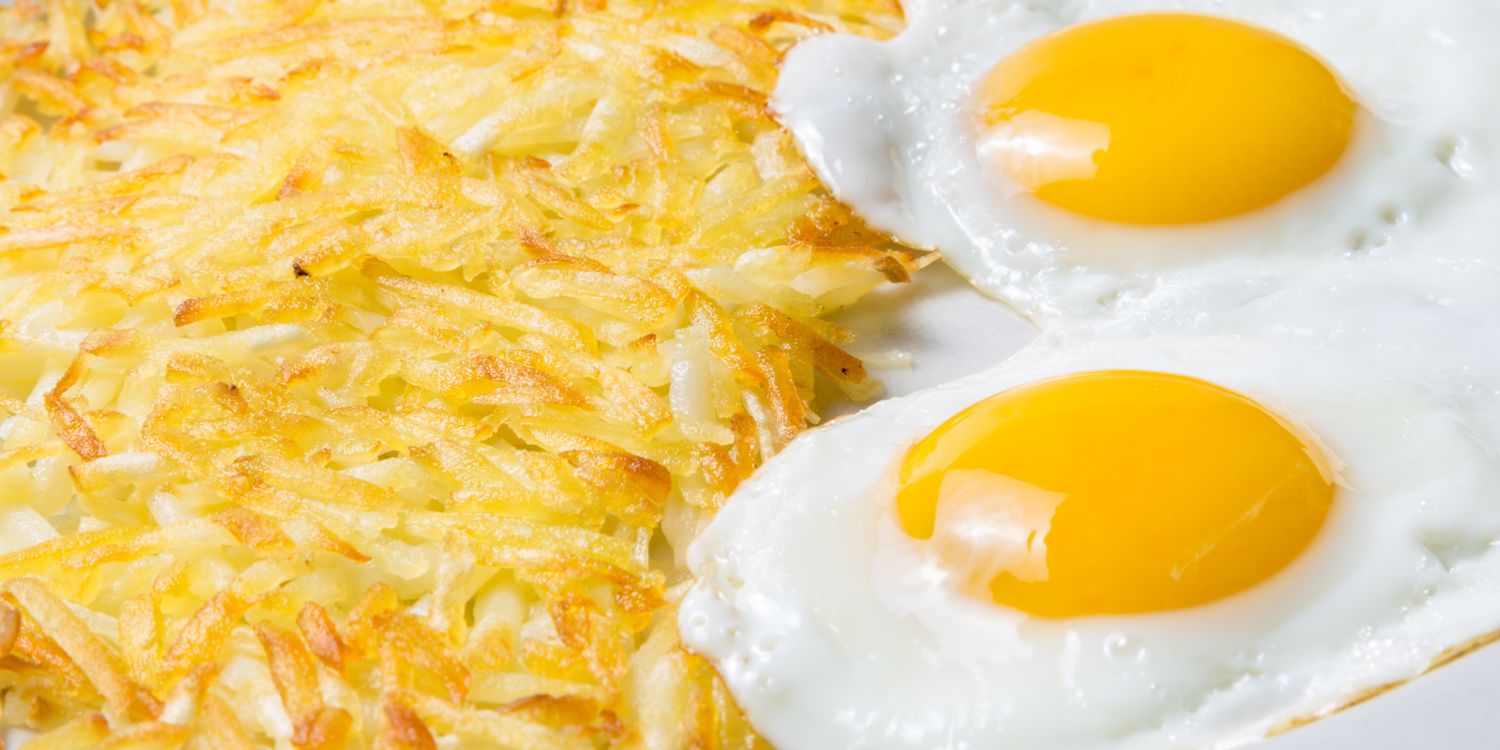:max_bytes(150000):strip_icc():format(jpeg)/ar-hash-browns-4x3-9299f442b1bc4753ab8316593a2f1cad.jpg)
There’s a huge gulf between crispy, golden-brown hash browns and soggy, pale potatoes that taste like, “I should have ordered the grits or toast instead…” Although it can feel risky to order hash browns at a restaurant, we’re almost never disappointed because the chefs have put in the reps. In fact, one of the experts we spoke to for this piece confirms his team slings up to 1,000 orders per week.
“Everything is better the more you do it. Restaurants tend to have a lot more practice and repetition. If you want to get better at anything—not just at hash browns—keep at it,” says J.C. Ricks, chef and co-owner of Dandelion Cafe in Houston, Texas.
True, practice makes progress. Still, the pros know a few secrets that make the side dish so much better at the diner than at our dining table. (Well, until now.) Read on for the dish.
The Secret to Restaurant-Quality Hash Browns, According to Chefs
Getty Images
As you’ll see below, there are several factors that can make or break your hash browns. But the most important of all—and what separates restaurant hash browns from the so-so spuds we make at home—is something that costs $0. It all boils down to moisture management.
Many restaurants rely on potatoes that have been prepared in some way before they hit the griddle, confirms George Formaro, chef-partner of Orchestrate Hospitality restaurants in Des Moines, Iowa. (No wonder we can’t get enough of those McDonald’s Hash Browns!) The potatoes are usually either dehydrated, frozen, or par-cooked, which makes them easier to work with—and easier to crank out with consistent results each time.
As you may have noticed when making mashed potatoes, different types of potatoes have different water content levels. And even within the same type of potatoes, a Russet can vary in moisture based on where it was grown, the time of the season, how mature it was when it was picked, and more. To control for this, and to allow for the potatoes to pan-fry rather than steam, it’s vital to give your potatoes some TLC before attempting to crisp them up, Ricks adds.
This need not be a laborious process, though. You have a couple options:
- Shred, squeeze, then steam. Rinse and scrub whole potatoes clean, dry well, then use a box grater or food processor to shred the potatoes to shred the skin-in potatoes. Transfer the pieces to a clean kitchen towel. Use your hands to wring the towel (as well as the shreds inside) firmly over the sink. Squeeze out as much moisture as possible. Place the pieces on a thin layer on a paper towel-lined plate, top with another layer of paper towels to help absorb moisture, and microwave for 2 minutes to steam. Now you’re ready to cook.
- Par-cook the potatoes whole. When time allows, Formaro likes to steam or boil the potatoes whole first. “Stop when the fork just pierces the center,” he recommends. Dry the potatoes well, allow them to cool (overnight or even an hour in the fridge works well), then use a box grater or food processor to shred the potatoes. Roll out a clean kitchen towel or some paper towels. On top, scatter the par-cooked shredded potatoes in a thin layer. Pat the potatoes dry once more. “This step will forever change your hash browns,” Formaro believes.
Either of these paths are true game-changers because “if the potatoes are too wet, they will not crisp up enough and seasoning will have a harder time sticking to them,” Ricks adds.
More Tips to Level-Up Your Hash Browns
Besides managing the moisture level “technique and time are key,” Ricks admits. We asked the chefs to share a few more pro tips to help coach us through the process of making perfect hash browns every time.
- Take a temp check. When you’re crunched for time or are ravenous, it can be tempting to crank up the heat as high as it will go. However, “very hot pans can burn potatoes quickly; resulting in hash browns that are charred on the outside while undercooked on the inside,” says Jake Sharp, kitchen assistant manager at Morning Story in Marion, Iowa. Aim to keep your pan or griddle around 350 degrees F (175 degrees C) to 375 degrees F (190 degrees C) to prevent burning on the exterior.
- Use enough fat. Potatoes will struggle to crisp without enough fat, Formaro says. For reference, we use about 1/4-inch for our Homemade Crispy Hash Browns. On a griddle, start with at least 3 tablespoons. As far as what fat to use, clarified butter (aka ghee), peanut oil, and avocado oil are among the best options for hash browns, the chefs say.
- Don’t rush it. “Restaurant hash browns also taste better because we’re not forcing it,” Formaro says. Once you place the potatoes on the grill or in the pan, “let the crust form. This takes longer than most home cooks give it. It’s truly one of the big mistakes people make: rushing the process or flipping too early. Let it ride.” By that, Formaro means to leave the first side alone—no fussing or flipping back and forth—until a dark golden brown crust forms. Over medium-high heat, this usually takes at least five to seven minutes. Then and only then, flip.
- Dial-in your ratios. There’s a reason why diners often ask for Waffle House hash browns “smothered and covered.” Sautéed onions and melted cheese take a solid side dish and make it better. That said, you can definitely overdo it, Ricks warns. “Whether you add cheese, onions, or whatever your heart desires, make sure the mixture is still at least 75 percent potato,” he suggests. Feel free to play around with different alliums and types of cheeses to find your perfect combo. For onion flavor throughout, consider mixing ½ finely chopped onion into your potatoes before cooking.
- Don’t be shy with spices. All three brunch experts agree that it pays off to pay attention to your seasoning. Fresh herbs like thyme shine, Sharp says, or try mixing up your own signature spice blend. Don’t forget the salt; just don’t add it too early, Ricks warns: “Salting and seasoning the potatoes way before cooking the shreds will leach out moisture, making them wet all over again. Season then cook as soon as possible.” After cooking, you may want to season with salt once more. It’s wise to do so while the potatoes are still hot, Formaro says.
If you try all of these tricks and feel like your hash browns don’t stack up to your favorite restaurant’s rendition, keep in mind that it might have less to do with how you treat the potatoes—and more to do with feeling treated yourself.
“You become slightly desensitized to the smell and taste of the food in front of you when you’re cooking,” Sharp says. “By the time you sit down and eat, it won’t taste the same. Having a meal cooked at a restaurant or by a loved one has the benefit of not wearing out those two senses. “Food always tastes better when someone else prepares it!”

